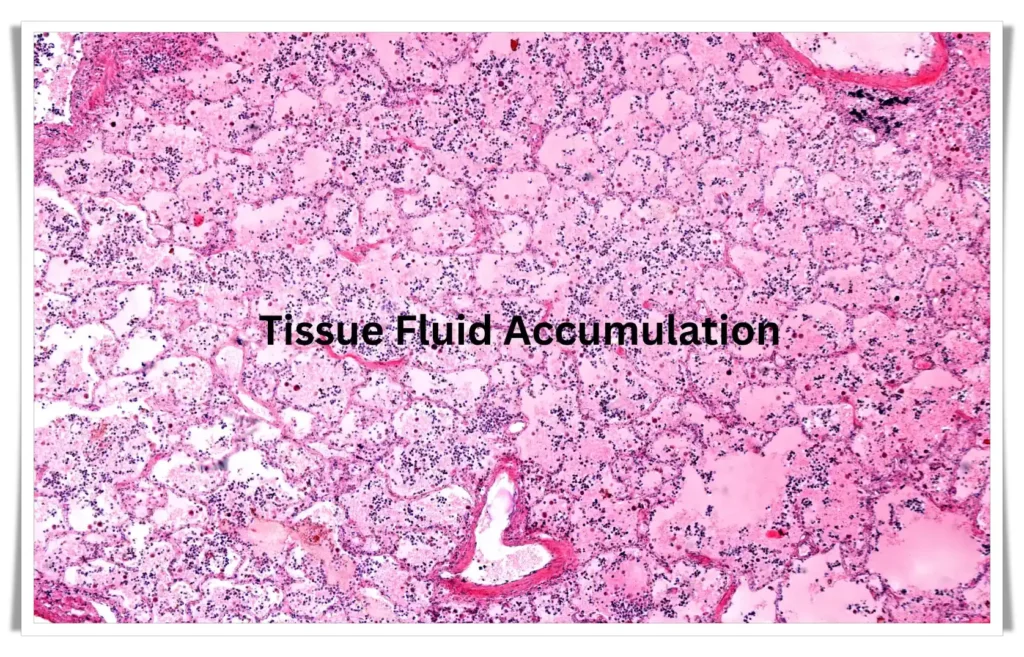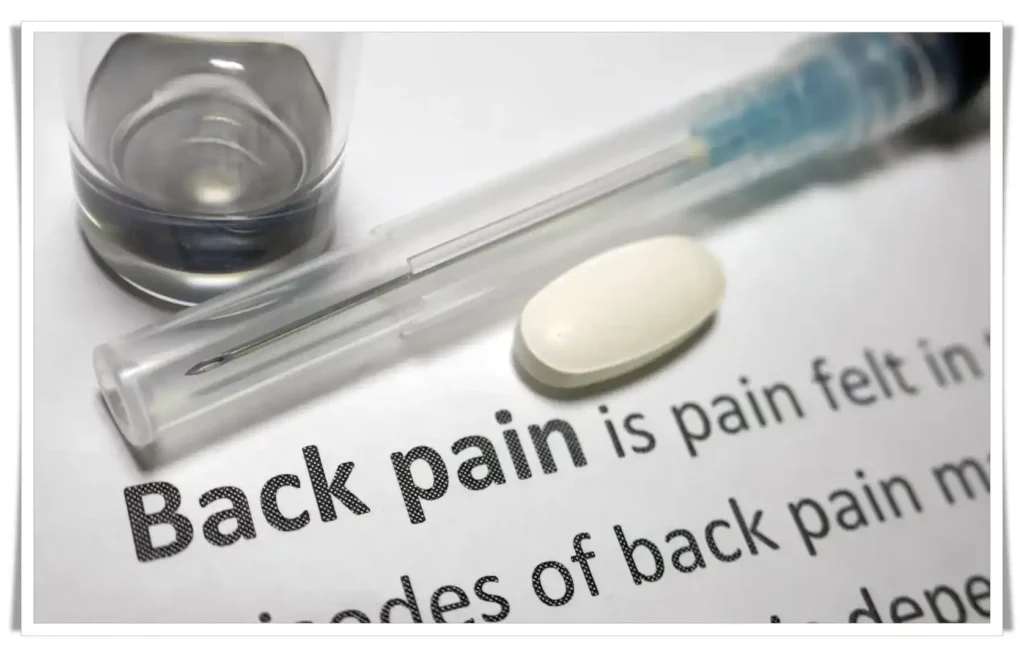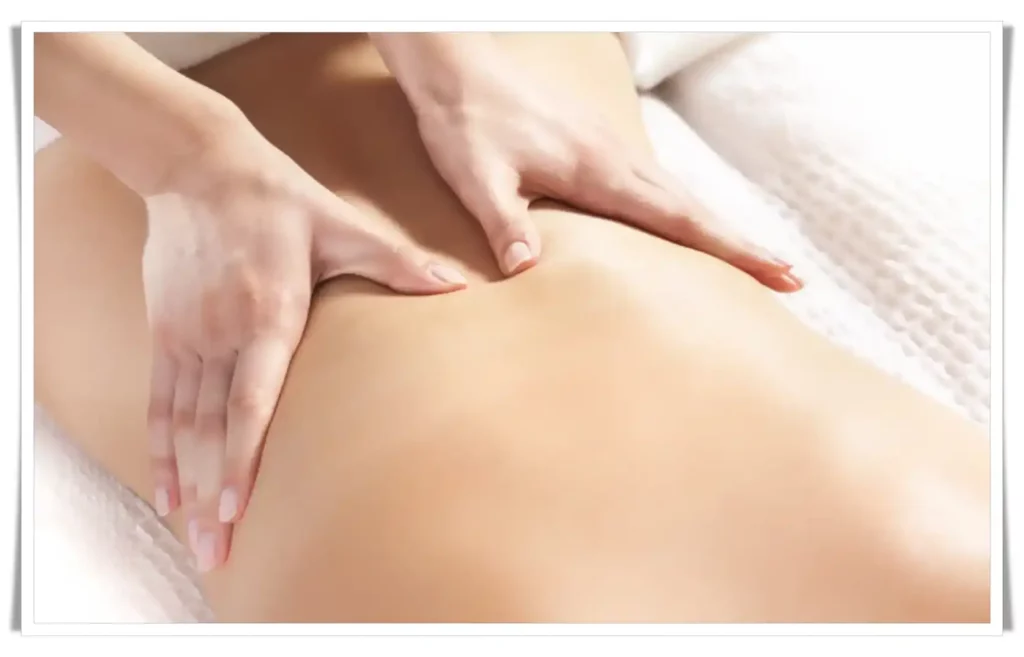What is acute edema?
Acute edema, also known as swelling, occurs when there is an excess of fluid in the body tissues. This condition can occur anywhere in the body, but it most commonly affects the legs, ankles, and feet. On the other hand, back pain is a common health condition that affects many individuals worldwide. It can be caused by various factors such as poor posture, muscle strain, and injuries. In some cases, acute edema can also cause back pain.
Empower Your Health Journey – Explore My Free Apps for a Vibrant, Healthier Lifestyle Today!
Acute edema and back pain are two health conditions that can cause significant discomfort and pain to individuals.
Understanding the link between acute edema and back pain is crucial for managing and treating these conditions. In this article, we will explore the connection between acute edema and back pain, the causes and symptoms of acute edema, and the various treatment options available.
The Pain and Swelling Connection: Understanding Acute Edema and Back Pain
Edema-Back Pain Link
Acute edema can cause back pain due to the accumulation of fluid in the tissues surrounding the spinal cord. This condition can put pressure on the nerves and cause pain, numbness, or tingling sensations. Additionally, edema in the lower extremities can lead to poor circulation, which can cause back pain. It is essential to identify the underlying cause of the edema to manage and treat the back pain effectively.
Swell-Pain Solution: Acute Edema Secrets
One of the best ways to manage and treat back pain caused by acute edema is to reduce the swelling. There are several solutions available to reduce edema, including:
- Elevating the affected area: This can help reduce the amount of fluid in the tissues and improve circulation.
- Compression therapy: Wearing compression stockings or wraps can help improve circulation and reduce swelling.
- Diuretics: These medications help remove excess fluid from the body.
- Exercise: Regular exercise can help improve circulation and reduce swelling.
- Dietary changes: Reducing salt intake can help prevent fluid retention and reduce edema.
Unraveling Backache
Back pain can be caused by various factors, including:
- Poor posture: Sitting or standing in the same position for extended periods can cause back pain.
- Muscle strain: Lifting heavy objects or sudden movements can cause muscle strain, leading to back pain.
- Injuries: Injuries such as fractures, sprains, or herniated discs can cause back pain.
- Medical conditions: Medical conditions such as arthritis or osteoporosis can cause back pain.
Identifying the underlying cause of back pain is crucial for effective management and treatment.
Edema Decoder
Acute edema can be caused by various factors, including:
- Injuries: Injuries such as sprains or fractures can cause edema.
- Medical conditions: Medical conditions such as heart failure, kidney disease, or liver disease can cause edema.
- Medications: Some medications such as blood pressure medication or anti-inflammatory drugs can cause edema.
- Pregnancy: Hormonal changes during pregnancy can cause edema.
- Sitting or standing for extended periods: This can cause fluid to accumulate in the lower extremities, leading to edema.
Identifying the underlying cause of edema is crucial for effective management and treatment.
Acute Edema
Acute edema, also known as swelling, is the accumulation of fluid in the body tissues. This condition can occur anywhere in the body, but it most commonly affects the legs, ankles, and feet. Acute edema can be caused by various factors, including injuries, medical conditions, and medications.

Back Pain
Back pain is a common health condition that affects many individuals worldwide. It can be caused by various factors such as poor posture, muscle strain, and injuries. Back pain can range from mild to severe and can significantly impact an individual's quality of life. It is essential to identify the underlying cause of back pain to manage and treat it effectively.
The Swelling Connection: Pain Management
Managing and treating acute edema can help alleviate back pain caused by fluid accumulation. Some pain management techniques include:
- Physical therapy: Exercises and stretches can help strengthen muscles and improve posture, reducing back pain.
- Pain medication: Over-the-counter pain medication or prescription medication can help manage back pain.
- Hot or cold therapy: Applying heat or cold to the affected area can help reduce pain and inflammation.
- Massage therapy: Massages can help reduce muscle tension and improve circulation, reducing back pain.
It is essential to consult a healthcare professional before starting any pain management technique.

Inflammation: Backache Relief
Inflammation can cause back pain and exacerbate acute edema. Reducing inflammation can help alleviate pain and reduce edema. Some techniques to reduce inflammation include:
- Anti-inflammatory medication: Over-the-counter or prescription anti-inflammatory medication can help reduce inflammation and alleviate pain.
- Dietary changes: Eating a healthy, balanced diet rich in anti-inflammatory foods such as fruits, vegetables, and omega-3 fatty acids can help reduce inflammation.
- Lifestyle changes: Reducing stress levels, getting enough sleep, and regular exercise can help reduce inflammation.
It is essential to consult a healthcare professional before starting any anti-inflammatory medication or making significant dietary or lifestyle changes.
Edema Causes
Acute edema can be caused by various factors, including injuries, medical conditions, and medications. Some common causes of edema include:
- Heart failure: A weakened heart can cause fluid to accumulate in the body tissues, leading to edema.
- Kidney disease: Impaired kidney function can cause fluid retention, leading to edema.
- Liver disease: A damaged liver can cause fluid to accumulate in the abdomen and lower extremities, leading to edema.
- Medications: Certain medications, such as blood pressure medication or anti-inflammatory drugs, can cause fluid retention, leading to edema.
- Pregnancy: Hormonal changes during pregnancy can cause fluid retention, leading to edema.
Pain & Swelling: Swelling Remedies
Reducing swelling can help alleviate back pain caused by acute edema. Some remedies to reduce swelling include:
- Elevation: Elevating the affected area can help reduce fluid accumulation and improve circulation.
- Compression therapy: Wearing compression stockings or wraps can help improve circulation and reduce swelling.
- Diuretics: These medications help remove excess fluid from the body.
- Exercise: Regular exercise can help improve circulation and reduce swelling.
- Dietary changes: Reducing salt intake can help prevent fluid retention and reduce swelling.

It is essential to consult a healthcare professional before starting any new treatment for edema.
Musculoskeletal Health: Back Pain Prevention
Maintaining good musculoskeletal health is essential for preventing back pain. Some ways to prevent back pain include:
- Maintaining a good posture: Proper posture can help reduce muscle strain and alleviate back pain.
- Regular exercise: Regular exercise can help strengthen muscles and improve flexibility, reducing the risk of back pain.
- Lifting heavy objects safely: Proper lifting techniques can help reduce the risk of muscle strain and back injuries.
- Managing stress: Stress can cause muscle tension, leading to back pain. Managing stress levels can help reduce the risk of back pain.
Edema Treatment
Treating acute edema depends on the underlying cause. Some treatment options include:
- Medications: Diuretics or medication to treat the underlying medical condition causing edema.
- Compression therapy: Wearing compression stockings or wraps can help improve circulation and reduce swelling.
- Lifestyle changes: Reducing salt intake, exercising regularly, and maintaining a healthy weight can help prevent fluid retention and reduce edema.
- Surgery: In some cases, surgery may be necessary to treat underlying medical conditions causing edema.

Chronic Pain
Chronic pain can significantly impact an individual's quality of life. Chronic back pain can be caused by various factors such as injuries, medical conditions, or poor posture. Effective management and treatment of chronic pain require identifying the underlying cause and developing a personalized treatment plan. Some treatment options include pain medication, physical therapy, and surgery.
Lumbar Health
Maintaining good lumbar health is crucial for preventing back pain. The lumbar region of the spine supports most of the body's weight, making it more susceptible to injuries and strain. Some ways to maintain good lumbar health include:
- Regular exercise: Strengthening the muscles in the back can help support the lumbar region and reduce the risk of back pain.
- Maintaining a good posture: Proper posture can help reduce muscle strain and alleviate back pain.
- Stretching: Stretching can help improve flexibility and reduce muscle tension, reducing the risk of back pain.
- Lifting heavy objects safely: Proper lifting techniques can help reduce the risk of back injuries.

FAQs
Q: Can edema kill you? A: While edema itself is not life-threatening, it can be a symptom of an underlying medical condition that can be life-threatening. It is essential to consult a healthcare professional if you experience edema.
Q: How to drain edema fluid? A: Treatment for draining edema fluid depends on the underlying cause. Some treatment options include diuretics, compression therapy, or surgery.
Q: Is edema in the legs life-threatening? A: Edema in the legs can be a symptom of an underlying medical condition that can be life-threatening. It is essential to consult a healthcare professional if you experience edema in the legs.
Q: Oedema vs edema: What is the difference? A: Oedema and edema are the same conditions, but the spelling differs between American and British English.
Q: What causes edema in the legs? A: Edema in the legs can be caused by various factors, including heart failure, kidney disease, liver disease, or medication side effects.
Scientific Study Summary
A study published in the Journal of Back and Musculoskeletal Rehabilitation investigated the effect of edema on low back pain. The study found that patients with low back pain and acute edema experienced higher levels of pain and disability than those without edema. The researchers concluded that reducing edema can improve pain and disability levels in patients with low back pain.
Link to study: https://content.iospress.com/articles/journal-of-back-and-musculoskeletal-rehabilitation/bmr00332
Trustworthy Websites Resources
- Mayo Clinic: https://www.mayoclinic.org/
- American Academy of Orthopaedic Surgeons: https://www.aaos.org/
- National Institute of Arthritis and Musculoskeletal and Skin Diseases: https://www.niams.nih.gov/
Common Causes of Edema:
| Cause | Description |
|---|---|
| Heart failure | A weakened heart can cause fluid to accumulate in the body tissues, leading to edema. |
| Kidney disease | Impaired kidney function can cause fluid retention, leading to edema. |
| Liver disease | A damaged liver can cause fluid to accumulate in the abdomen and lower extremities, leading to edema. |
Conclusion:
Acute edema and back pain can cause significant discomfort and pain to individuals. Understanding the link between acute edema and back pain is crucial for managing and treating these conditions effectively. Edema can cause back pain due to the accumulation of fluid in the tissues surrounding the spinal cord. It is essential to identify the underlying cause of the edema to manage and treat the back pain effectively.
Reducing swelling can help alleviate back pain caused by acute edema. Managing and treating acute edema can help alleviate back pain caused by fluid accumulation. Maintaining good musculoskeletal health and lumbar health is crucial for preventing back pain. Effective management and treatment of chronic pain require identifying the underlying cause and developing a personalized treatment plan. It is essential to consult a healthcare professional to determine the best treatment option for edema or back pain.
Are you striving for optimal health and happiness?
Our latest blog post, "How Can We Achieve the Best State of Well-Being?", provides invaluable insights and actionable tips to guide you on completing physical, mental, and emotional wellness. Don't miss out on unlocking your full potential—give it a read today!
Short Summary
Acute Edema and Back Pain
Back pain is caused by a variety of problems including “Acute Pulmonary Edema.” Edema builds up abnormal and excessive fluids that cause serious actions to the tissue cells. What happens is similar to over-watering plants. The plant will swell and gradually wither away.
Edema in acute stages is defined as heart failure to one side, yet the problem extends to cause pain in the back. What occurs when the heart is interrupted; it channels the fluids to tubes, vessels, ducts, and passageways that extend to the lungs.

Causes of edema:
Edema may arise from inhaling smoke, MI, CHF, Myocarditis, excessive I.V. intakes of fluid, Valvular disease, and overdose of drugs, such as morphine, barbiturates, and heroin. Acute edema arises from ARDS (Adult Respiratory Distress Syndrome) and Atherosclerosis.
The lack of heart pumping can cause stress to the chest, which affects the spine's structure and mobility when the chest is scarred. Overarching the back is where back pain starts since the chest is restricted from scarring and/or edema.
Experts will often use X-rays, ABG tests, ECG, and monitor Homodynamic to discover edema. Of course, edema can lead to major problems, such as Hypernatremia, Digoxin Toxicity, Hypokalemia, Excessive Fluid, and Pulmonary Blockage of the arteries, (Embolism), which starts blood clotting and affects blood circulation. Hypokalemia will decrease the potassium intake that is required by blood. What happens is the decrease of potassium in the blood causes excessive excretion of fluids that lead to the muscles, which cause weakness. Back pain is not necessarily the issue at this stage, since the heart is the starting point, which could lead to cardiac arrest.
When acute edema is present, experts will often restrict fluid intake, while administering I.V. fluids to substitute. Oxygen and meds are prescribed. Often the doctor will request that the patient remain consistent in a high position, such as “Fowler’s.”
Symptoms:
Edema may present fatigue, coughing, JVD, Hypophysis, murmurs, Orthopnea, one-sided heart failure (Right often), low output of cardiac, exerted Dyspnea, and so on. The condition can cause various other symptoms to emerge as well.
Experts will request that the patient limit fluid intake, and join in oxygen therapy. Since edema causes excessive fluid buildup, isometric exercises, and bed, rest is required. Isometric workouts are the process of pushing muscles next to a sturdy surface, whereas the muscles are put under tension, yet restricted from contractions. The exercises are recommended in a variety of medical treatments when back pain is involved.
Edema also affects the joints, cartilage, muscles, etc, which can cause tenderness, ulcers of the legs, changes of stasis, and so forth. Edema affects the veins found in the neck as well, which is one of the leading starts of back pain. To avoid traveling into the heart cavity and discussing heart conditions, I will sum up edema and the causes of back pain.

As I mentioned earlier, back pain starts with edema since when the heart is not pumping blood it affects the connective tissues, ligaments, tendons, muscles, cells, joints, etc. As you can see when the skeleton elements are targeted pain will occur from swelling and inflammation. The cause of back pain then starts with excessive fluid buildup emerging from acute edema and/or peripheral edema conditions.
To learn more about edema and back pain consider tendons, ligaments, disks, joints, connective tissues, neurological disorders, and so on.
Back pain has affected millions of people, yet the leading causes emerge from nerve and musculoskeletal disorders. Still, many diseases and disorders can cause back pain, including edema. When doctors discover musculoskeletal and nerve disorders, they often link one of the potential causes to edema.
If you have questions or want to comment, please leave them below and I will answer as soon as I can. Thank you for reading 'Understanding Acute Edema and Back Pain: The Pain and Swelling Connection'





I loved how this article explained things in such a clear and easy-to-understand way. Plus, the tips for managing swelling and back pain were really useful. 😍💪
Wow, wonderful weblog format! How long have you
been blogging for? you make running a blog glance easy. The total
look of your site is magnificent, let alone the content material!
You can see similar: sklep online
and here najlepszy sklep
It’s remarkable for me to have a web page, which is useful for my experience.
thanks admin I saw similar here: sklep internetowy and also here:
e-commerce
I simply could not depart your web site before suggesting
that I really loved the standard information an individual supply to your guests?
Is going to be again regularly to inspect new posts I saw
similar here: Najlepszy sklep
Ahaa, its pleasant conversation on the topic of this article here
at this blog, I have read all that, so now me also
commenting here. I saw similar here: Najlepszy sklep